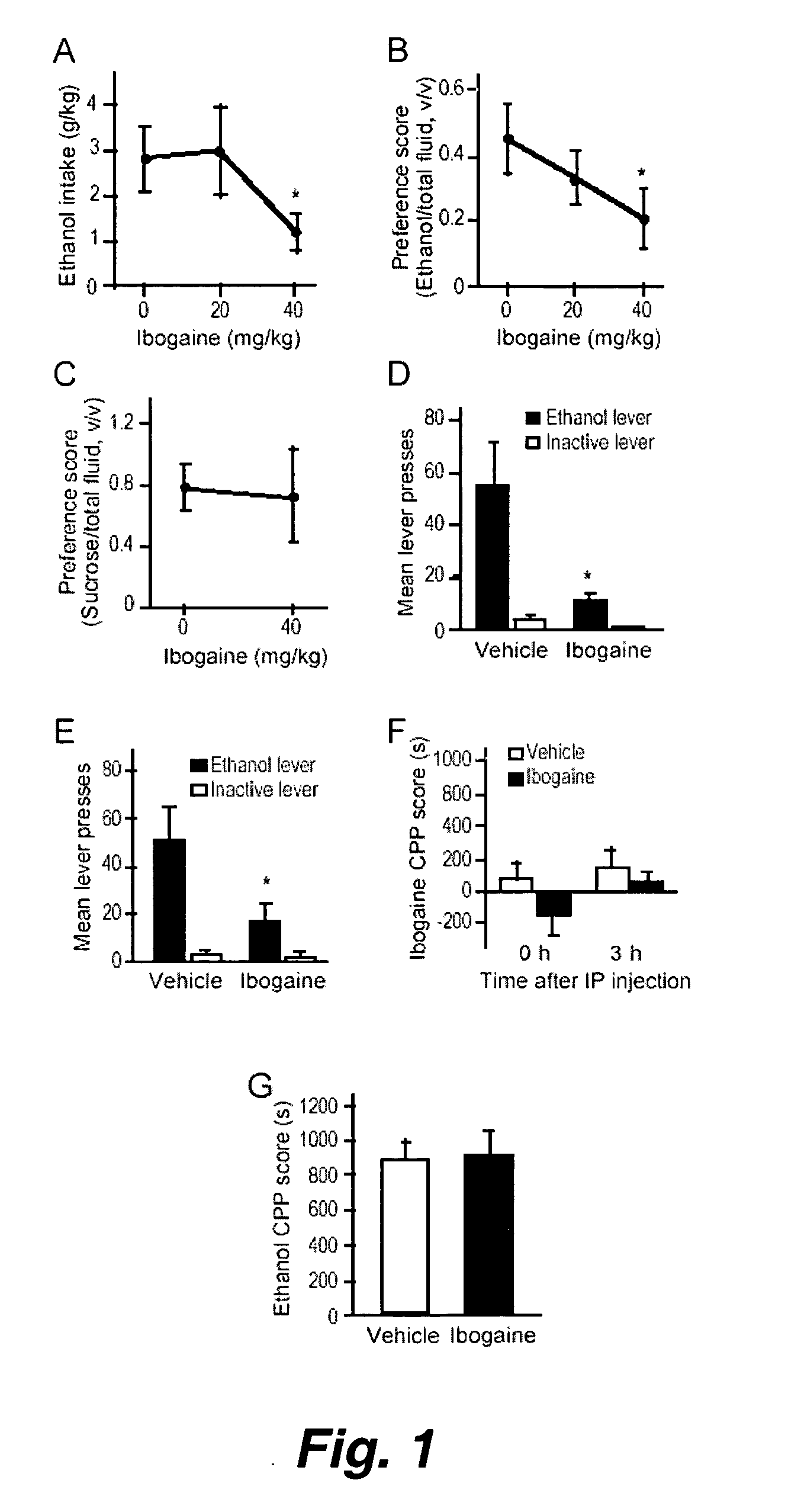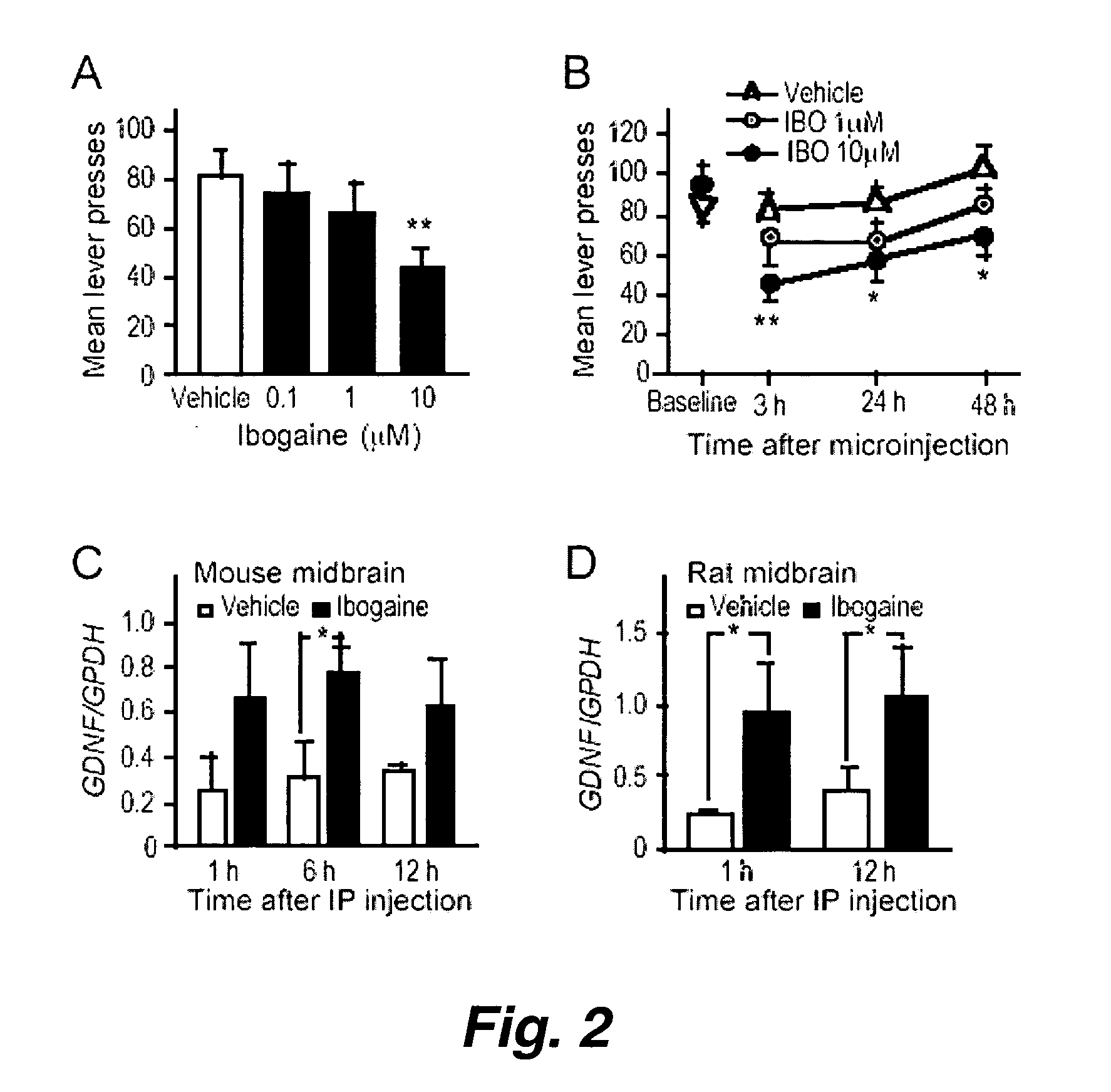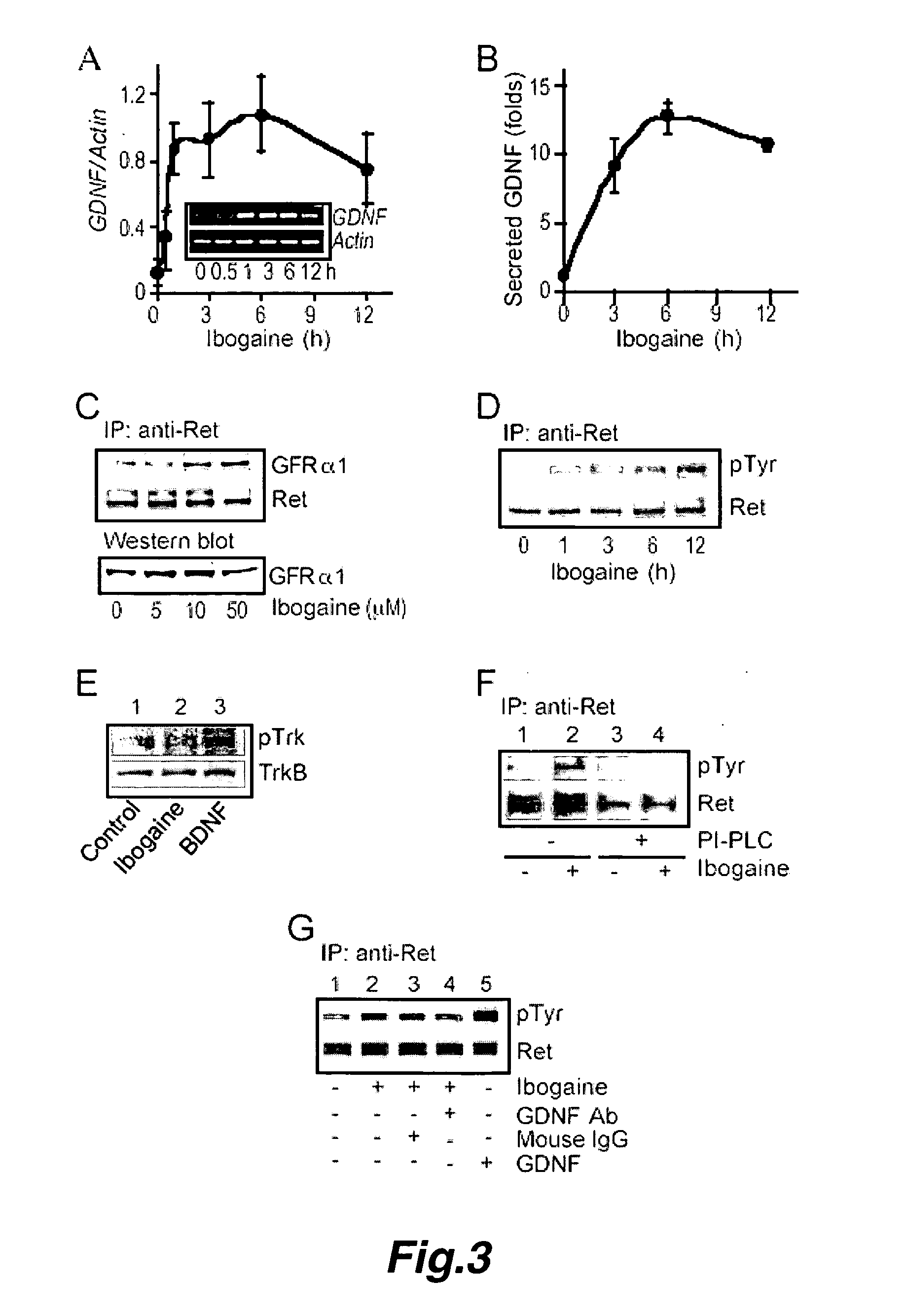Mitigating symptoms and behaviors of substance abuse by modulating GDNF or BDNF pathway activity
a technology of bdnf pathway and substance abuse, applied in the field of neurology, can solve the problems of not being able to prove efficacy, unable to mitigate the effects of ibogaine, and the neuroadaptation that underlies addiction may occur, so as to reduce the behavioral effects of ethanol, increase behavioral responses, and reduce the effect of bdnf level or signaling
- Summary
- Abstract
- Description
- Claims
- Application Information
AI Technical Summary
Benefits of technology
Problems solved by technology
Method used
Image
Examples
example 1
The Glial Cell Line-Derived Neurotrophic Factor Mediates the Desirable Actions of the Anti-Addiction Drug ibogaine against Alcohol Consumption
[0160] Alcohol addiction manifests as uncontrolled drinking despite negative consequences. Few medications are available to treat the disorder. Anecdotal reports suggest that ibogaine, a natural alkaloid, reverses behaviors associated with addiction including alcoholism; however, due to side effects, ibogaine is not clinically used. In this study we first characterized ibogaine's actions on ethanol self-administration in rodents. Ibogaine decreased ethanol intake by rats in 2-bottle choice and operant self-administration paradigms. Ibogaine also reduced operant selfadministration of ethanol in a reinstatement model. Using a conditioned place preference (CPP) paradigm, we found that ibogaine was not rewarding or aversive, nor did it alter the rewarding properties of ethanol. Next, we set to identify a molecular mechanism that mediates the desi...
example 2
RACK1 and BDNF: A Homeostatic Pathway that Regulates Alcohol Addiction
[0198] Alcoholism is a devastating disease that manifests as uncontrolled drinking. Consumption of alcohol is regulated by neurochemical systems within specific neural circuits, but endogenous systems that may counteract and thus suppress the behavioral effects of ethanol including intake are unknown.
[0199] Here we tested the possibility that BDNF is part of a homeostatic pathway that regulates ethanol intake. We also assessed the interactions between RACK1, BDNF, and ethanol, and determined whether the RACK1 / BDNF pathway is involved in the regulation of the behavioral actions of ethanol.
[0200] In this example, we demonstrate that BDNF reduces the behavioral effects of ethanol, including consumption, in rodents. We found that decreases in BDNF levels or signaling results in increased behavioral responses to ethanol whereas increases in the levels of BDNF, mediated by the scaffolding protein RACK1, attenuates th...
PUM
| Property | Measurement | Unit |
|---|---|---|
| Tm | aaaaa | aaaaa |
| diameter size | aaaaa | aaaaa |
| wavelength | aaaaa | aaaaa |
Abstract
Description
Claims
Application Information
 Login to View More
Login to View More - R&D
- Intellectual Property
- Life Sciences
- Materials
- Tech Scout
- Unparalleled Data Quality
- Higher Quality Content
- 60% Fewer Hallucinations
Browse by: Latest US Patents, China's latest patents, Technical Efficacy Thesaurus, Application Domain, Technology Topic, Popular Technical Reports.
© 2025 PatSnap. All rights reserved.Legal|Privacy policy|Modern Slavery Act Transparency Statement|Sitemap|About US| Contact US: help@patsnap.com



